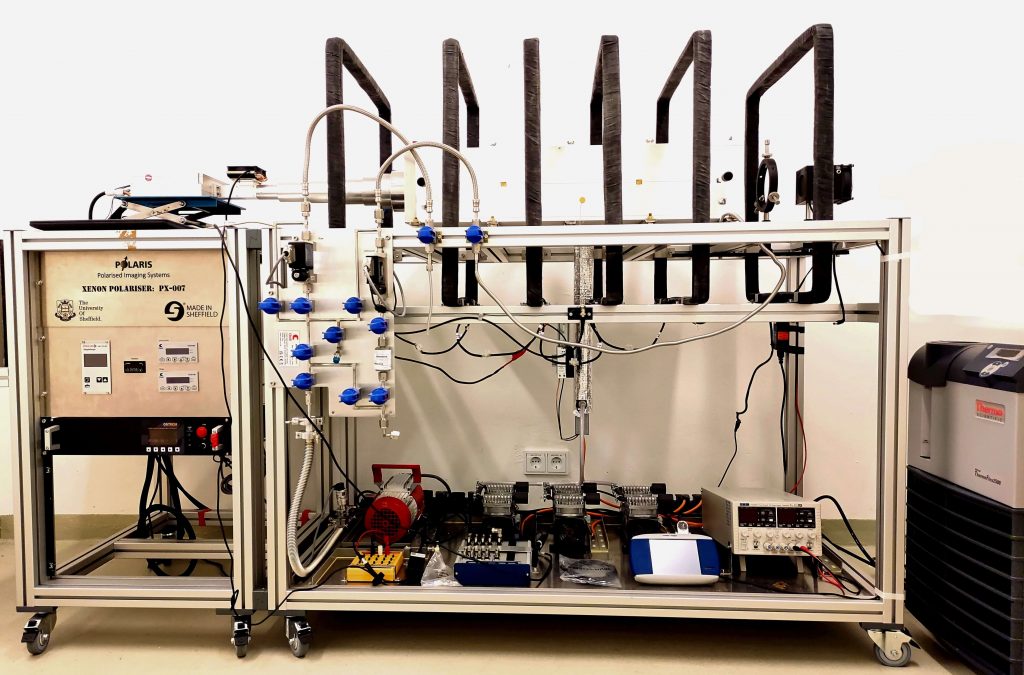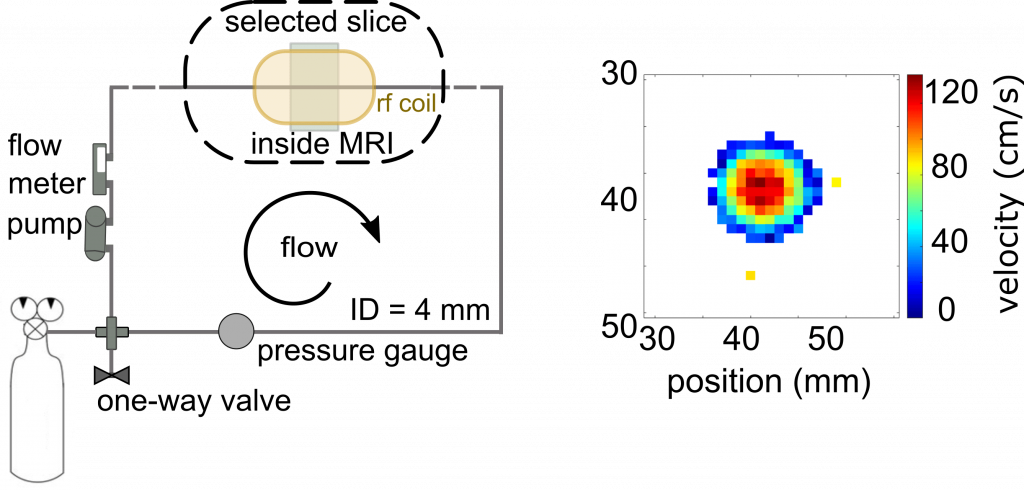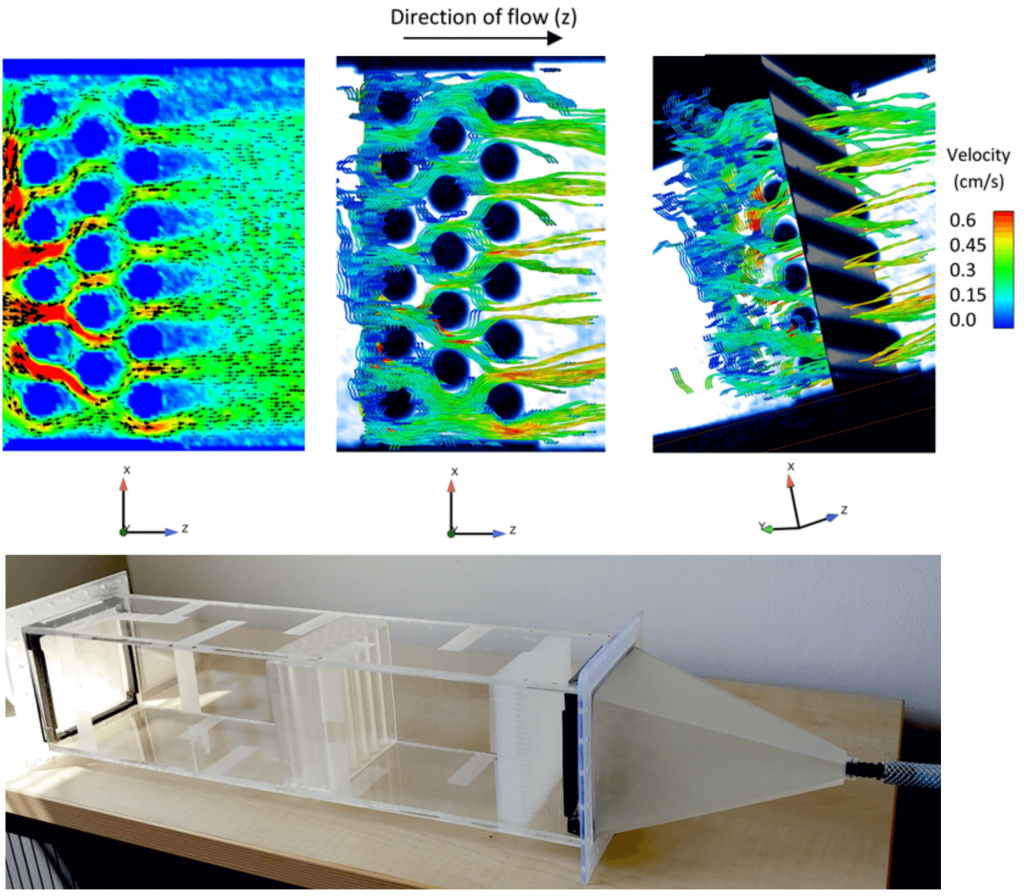A2
3D-Measurements in dense granular assemblies using hyperpolarised Magnetic Resonance Imaging

Due to the limited accessibility of the bulk material to direct detection methods, only integral flow quantities can often be measured at the inlet and outlet of packed bed reactors. The exact understanding of the processes inside these technical systems is, thus, just as difficult as the system design with regard to energy efficiency and product quality. Furthermore, predictions from simulations cannot be experimentally validated in detail.
Therefore, project A2 aims to measure the three-dimensional (3D) velocity field of the gas flow in the reference configuration of the CRC/TRR by means of hyperpolarised phase-contrast magnetic resonance imaging (pc-MRI). Three-dimensional, temporally and spatially resolved flow maps of the entire gas volume will be generated. These flow field data are essential and form the basis for further understanding the homogeneous and heterogeneous chemical reaction rates as well as temperature distributions in particle beds. Sensors or tracer particles, which can perturb the flow and particle movement, are not required. Optical access for MRI measurements is also not necessary, and arbitrary geometries are possible. The high flexibility of pc-MRI allows adaptations of the measurement to the requirements, e.g. regarding the sample volume (up to about 40 x 40 x 40 cm in commercial MRI) and the spatial (approx. 1 millimeter) or temporal resolution (approx. 1/10 second).

With established MRI methods, usually only liquids can be detected due to their favourable physical properties with regard to the generation of magnetisation (also called spin polarisation) and its lifetime (relaxation properties). In this project, we study flow with gaseous media using hyperpolarised xenon and thermally polarised ethane, and perform experiments with water for reference. Overall, the comprehensive three-dimensional, quantitative measurement of gas flow fields in complex geometries of non-transparent particle beds will be possible for the first time.
In A2, we installed a continuous flow xenon hyperpolariser with sufficient flow and polarisation level for fast and accurate MRI detection of gas and radiofrequency coils for xenon MRI. For the test measurements, a thermally polarised ethane gas was chosen and studied inside a pipe to be extended for the reference configuration. We are also developing non-magnetic MRI setups utilising materials with magnetic susceptibilities closely matching the studied media. To identify a suitable material, 22 options for 3D printing were measured and are available online as an open material database (https://madamepro.ovgu.de). In addition, we work on a 3D pc-MRI flow measurement method for the application in hyperpolarised gas systems. As a result, the measured and processed flow data from the reference configuration will be provided to the simulation projects and compared to the other experimental methodologies.




